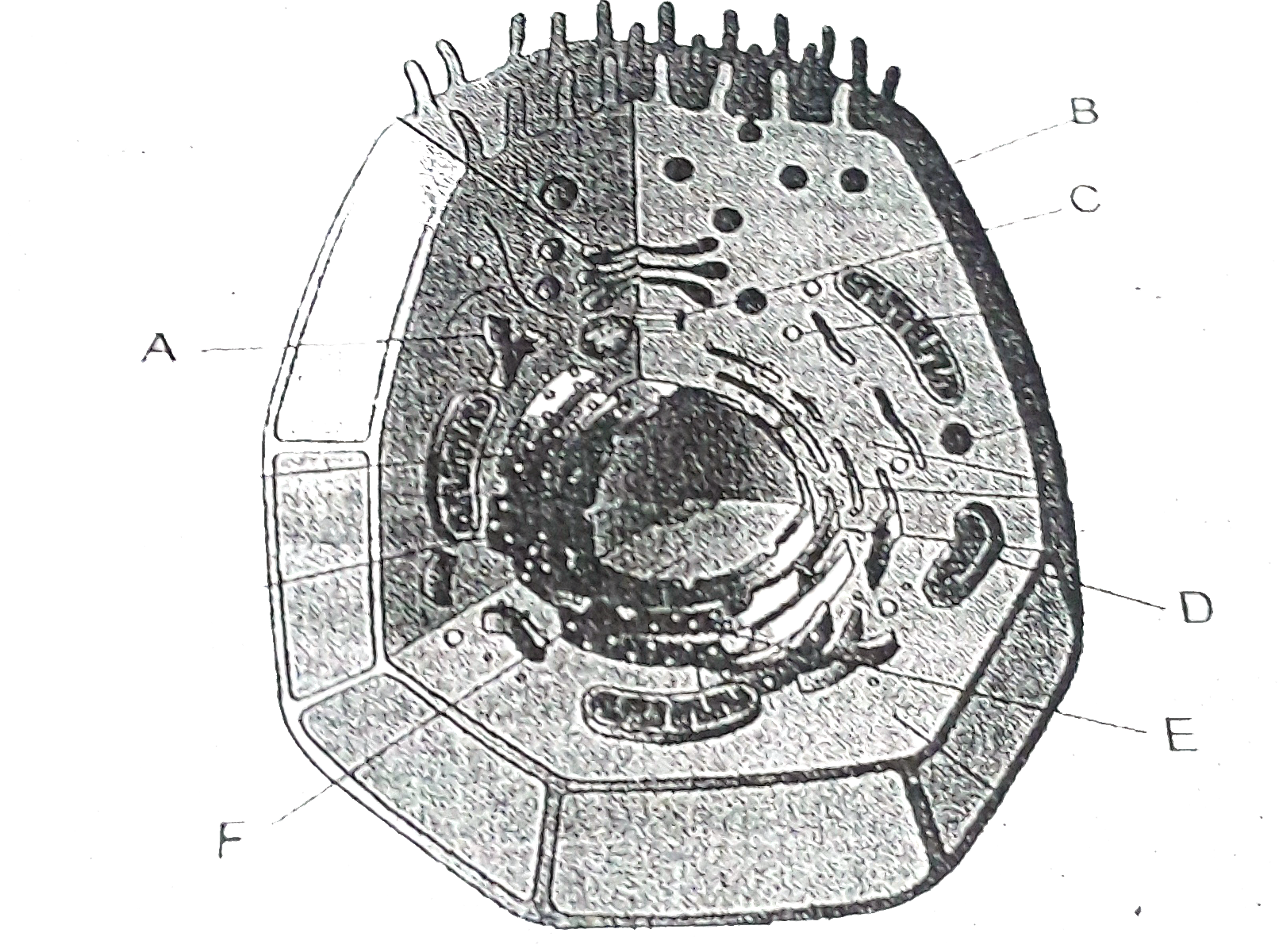Select correct statement(s) w.r.t cell envelope of bacteria.
(a) It is a tightly bound three layered structure.
(b) Glycocalyx could be a loose sheath called the capsule.
(c) All layers of it,act together as a single protective layer.
Step by step video & image solution for Select correct statement(s) w.r.t cell envelope of bacteria.(a) It is a tightly bound three layered structure.(b) Glycocalyx could be a loose sheath called the capsule. (c) All layers of it,act together as a single protective layer. by Biology experts to help you in doubts & scoring excellent marks in Class 11 exams.
Similar Questions
Identify the correct statement w.r.t. the given cell

A. Concerned with lipid and steroidal hormone synthesis
B. Outer non- living rigid structure which gives shape to the cell and protects from mechanical damage and infaction .
C. Both lie perpendicular to each other and each has an organisation like the cart wheel .
D. Responsible for trapping light energy for the synthesis of sugar.
E. Present in cells actively involved in protein synthesis and secretion.
F. Spherical structures rich in hydrolytic enzymes.View SolutionSelect the incorrect statement(s) w.r.t regulator gene of lac operon, br (a)-It is a constitutive gene . Br (b)- It is always functional. Br C-It codes for repressor protein. Br (d)- It increases permeability of the cell forβ-galactosidase.
View Solution
Knowledge Check
- Question 1 - Select One
Choose the wrong statement regarding bacterial cell
A. Glycocalyx is the outer most envlope in bacteria
B. The glycocalyx could be a loose sheath called capsule
C. The glycocalyx may be thick and tough called slime layer
D. A special structure formed by the plasma membrane is called mesosome
E. Small bristle like fibers sprouting out of the cell are called fimbriaeAA and C are wrongBA and B are wrongCB and C are wrongDA and D are wrong - Question 2 - Select One
Choose the wrong statement regarding bacterial cell
A. Glycocalyx is the outer most envlope in bacteria
B. The glycocalyx could be a loose sheath called capsule
C. The glycocalyx may be thick and tough called slime layer
D. A special structure formed by the plasma membrane is called mesosome
E. Small bristle like fibers sprouting out of the cell are called fimbriaeAA and C are wrongBA and B are wrongCB and C are wrongDA and D are wrong - Question 3 - Select One
Bacterial cells have a chemically complex cell envelope. The cell envelope consists of a tightly bound three layer structure, i.e., the
AOutermost cell wall followed by the plasma membrane and then the glycocalyxBOutermost glycocalyx followed by plasma membrane and the cell wallCOutermost cell wall followed by the glycocalyx and then the plasma membraneDOutermost glycocalyx followed by the cell wall and then the plasma membrane
Select the correct statement w.r.t anther. (a) Anther lobes are attached to each other by a band of vasculated sterile tissue. (b) Fibrous bands are present in Hydrocharitaceae. (C) Microsporangia on maturity get filled with pollen grains (d) Homogeneous mass of meristematic cells in microsporangium form microspore mother cells. (e) Cells of middle layers nourishes the developing pollen grains
View SolutionSelect correct statement w.r.t Nostac.
A. It is a filamentous blue-green algae
B. Has ability to fix atmospheric nitrogen in specialised cells having thin wall
C. Performs oxygenic photosynthesisView Solutionread the following characteristics and select the correct statement w.r.t bacteriophage. (a) usually have ds DNA as genetic material. (b) Tail is proteinaceous and contains genetic material. (c) show binal symmetry. (d) it has 6 tail 3 and 6 tail fibres which aids its attachment to host cell
View SolutionRead the following statements w.r.t. Pericycle and choose the suitable option
( a ) It is the outermost portion of stele, that may be parenchymatous or sclerenchymatous.
( b ) It is present in monocot stems.
( c ) It is always single layered.View SolutionRead the following statements (A-D) and choose the option with correct ones :-
(A) Fimbriae are helpful in attachment of bacteria to rocks in streams and to the host tissues
(B) Flagellum is composed of filament, hook and Basal body.
(C) Bacteria respond differently to the Gram staining due to difference in their cell wall structure.
(D) Glycocalyx cell wall and plasma membrane are collectively termed as capsule.View Solution
